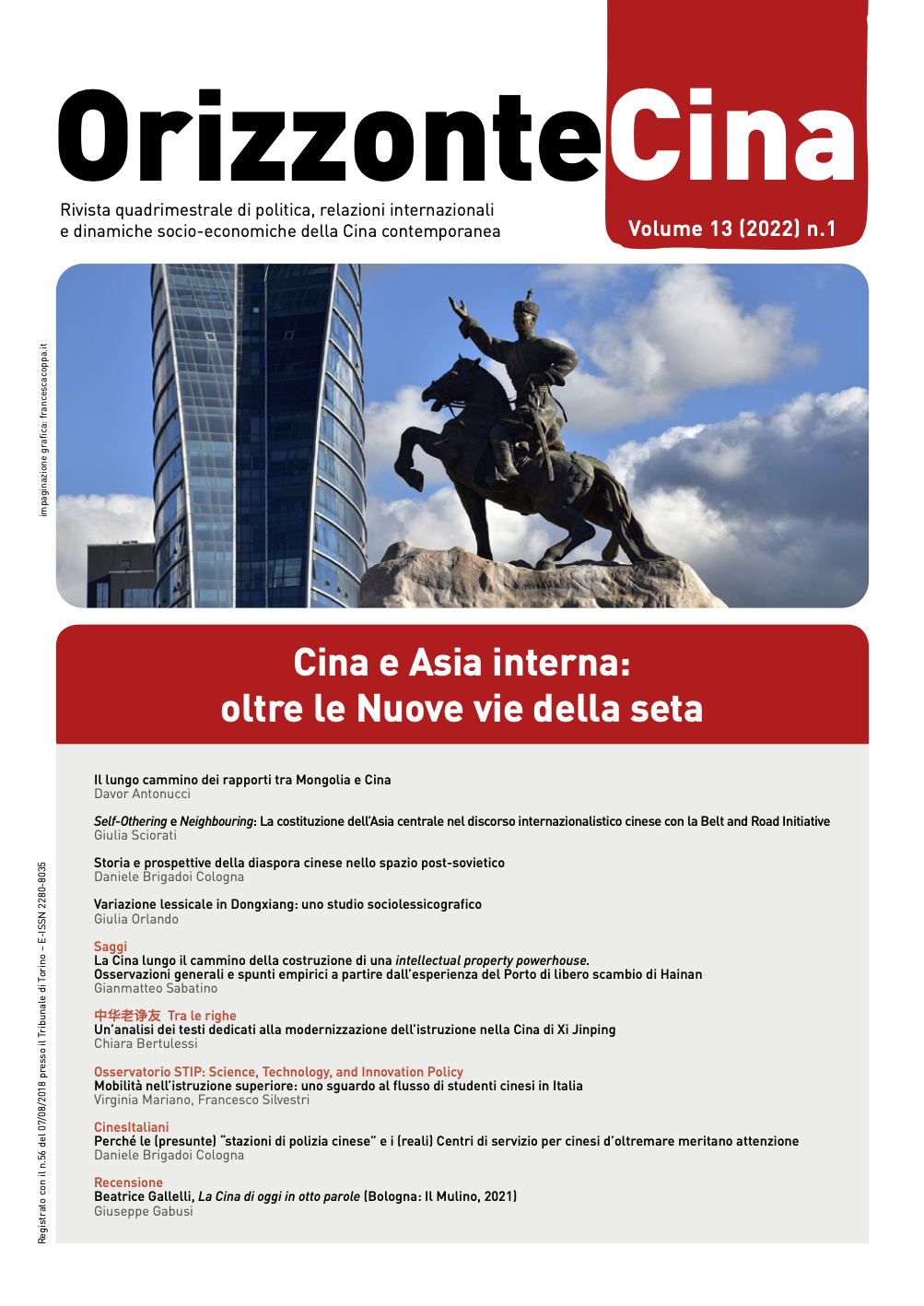Variazione lessicale in Dongxiang: uno studio sociolessicografico
DOI:
https://doi.org/10.13135/2280-8035/7038Abstract
A seguito della Xībù Dàkāifā (1999) e della BRI (2013), Lanzhou è diventata il maggiore centro economico della Cina occidentale e l'incarnazione del sogno cinese di catapultare le sue regioni occidentali più povere nell'espansione economica attualmente in corso. L'urbanizzazione senza precedenti che ne è conseguita ha causato un notevole adattamento al mutato ecosistema linguistico. Questo articolo prende in esame il caso della lingua Dongxiang, una lingua mongola del Gansu meridionale, analizzando la variazione lessicale che si è verificata negli ultimi quarant'anni, la proporzione e la distribuzione dei prestiti sinitici, risultanti sia dalle politiche linguistiche implementate che dalla marginalizzazione economica delle lingue non sinitiche. La presente ricerca mette a confronto tre dizionari, pubblicati rispettivamente prima (1983) e dopo (2001) la Xībù Dàkāifā e dopo (2014) la BRI. La prossimità temporale tra i cambiamenti economici e gli anni di pubblicazione consente di analizzare la standardizzazione proposta per il Dongxiang, mentre il lasso di tempo considerato permette di esaminare l'impatto dei cambiamenti economici portati dalla Xībù Dàkāifā e dalla BRI.




